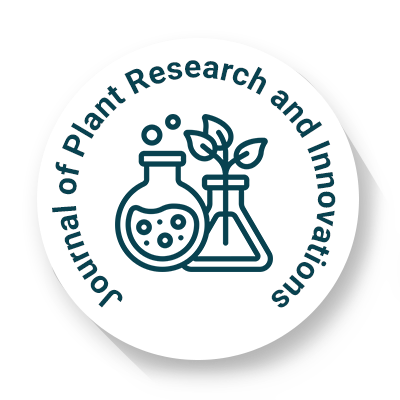
Journal of Plant Research and Innovations
OPEN ACCESS

OPEN ACCESS
Plant phylogeny and paleobotany are two interrelated disciplines that play a crucial role in elucidating the evolutionary history, diversification, and ecological adaptations of plant life over geological timescales. Plant phylogeny is concerned with reconstructing the evolutionary relationships among plant species based on morphological characteristics, genetic sequences, and molecular data. Through the construction of phylogenetic trees, researchers are able to trace lineage divergences and identify common ancestors, enabling a deeper understanding of both extant and extinct plant taxa. Phylogenetic analysis not only provides insights into the origin and classification of plant groups but also informs ecological and functional traits, biogeographic patterns, and the evolutionary mechanisms underlying plant diversity. Advancements in molecular systematics, including high-throughput DNA sequencing and bioinformatics, have significantly refined phylogenetic reconstructions, allowing scientists to resolve previously ambiguous relationships and reclassify taxa in accordance with evolutionary evidence. As such, plant phylogeny forms the foundation for taxonomic classification and plays an instrumental role in comparative biology, conservation planning, and the study of plant form and function.
Paleobotany, the scientific study of fossilized plants, complements phylogenetic research by providing direct evidence of plant morphology, reproductive structures, and ecological interactions from the geological past. By examining fossil records—including impressions, compressions, permineralizations, and microfossils such as pollen and spores—paleobotanists reconstruct the structure, physiology, and distribution of ancient plant species. This fossil evidence is essential for calibrating molecular clocks in phylogenetic trees, helping to estimate divergence times and evolutionary rates with greater accuracy. Paleobotanical research offers critical insights into key evolutionary events, such as the transition of plants from aquatic to terrestrial habitats, the emergence of vascular tissues, the evolution of seeds and flowers, and the rise of angiosperms during the Cretaceous period. Furthermore, paleobotany sheds light on the co-evolution of plants with other organisms, such as insects and fungi, and on how ancient climate fluctuations and mass extinction events have influenced plant evolution and community dynamics. The integration of paleobotanical data with phylogenetic frameworks allows for a more comprehensive understanding of macroevolutionary trends and the long-term resilience and adaptability of plant lineages. In the context of modern environmental challenges, knowledge derived from plant phylogeny and paleobotany provides a valuable perspective on biodiversity conservation, ecosystem restoration, and the potential responses of plant communities to future climate scenarios. Together, these disciplines contribute significantly to the broader field of evolutionary biology and enhance our understanding of the complex and dynamic history of life on Earth.